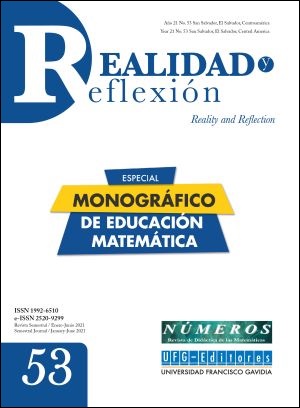Teaching Statistics with meaning and in context through problem solving
DOI:
https://doi.org/10.5377/ryr.v53i53.10897Keywords:
Statistical litreracy, reasoning and thinking, statistical education, contextualized problem solving, statistical investigative processAbstract
Nowadays there is an awareness of the need for statistically educated citizens, in the sense that they possess the skills and capacities to efficiently and critically handle information, understand the variability of phenomena and make intelligent decisions in uncertain situations. This requires Statistics to be taught meaningful and contextualized. In this article we begin by referring to Statistics as a tool for life and the statistical culture that every citizen should achieve; then we conceptualize Statistical Education and the key elements of teaching this discipline, to finally focus on problem solving as a way to develop a statistical literacy, reasoning and thinking. Some examples of problems concerning Curcio’s reading data levels as well as different types of contexts as those proposed by Diaz and Poblete and OECD and Wild and Pfannkuch’s investigative cycle, are analyzed. The conclusions aim to reinforce research on teachers preparation to bring contextualized and meaningful teaching of statistics to the classroom, in order to contribute to the formation of critical citizens.
Downloads
1510
Downloads
Published
How to Cite
Issue
Section
License
© Universidad Francisco Gavidia
Instituto de Ciencia, Tecnología e Innovación (ICTI)
Reality and Reflection
The content and opinions expressed in the publication are the responsibility of the authors of the published articles. The authors assign the publishing and publishing rights, in printed and digital version, to the Universidad Francisco Gavidia.
Proof of originality and assignment of publication rights
The authors must sign a certificate in which they indicate that the text presented for publication is original, unpublished and that it has not been sent for review in another academic publication; In turn, the authors assign the rights of publication and publication to Francisco Gavidia University. The format of this record will be sent through the emails: editores@ufg.edu.sv and jlozano@ufg.edu.sv
The journal Reality and Reflection is housed in the institutional dissemination platforms (web page and in the repository), as well as in databases and other pages of scientific dissemination. The publications of the Francisco Gavidia University are subject to the Salvadoran copyright law, contemplated in the Intellectual Property Law https://www.asamblea.gob.sv/
The content of the work is the sole responsibility of the author, therefore, if for any reason or reason, direct or indirect, the Editor is obliged to pay any compensation to a third party derived from the work of the author, whether it is established in a transaction, agreement or final or enforceable judicial sentence, the Editor may repeat against the Author for the total amount of compensation, plus adjustments, interests and costs that correspond.
It will be the obligation of the UFG to grant five copies of the publication which will be delivered at the UFG Editores headquarters in San Salvador.

